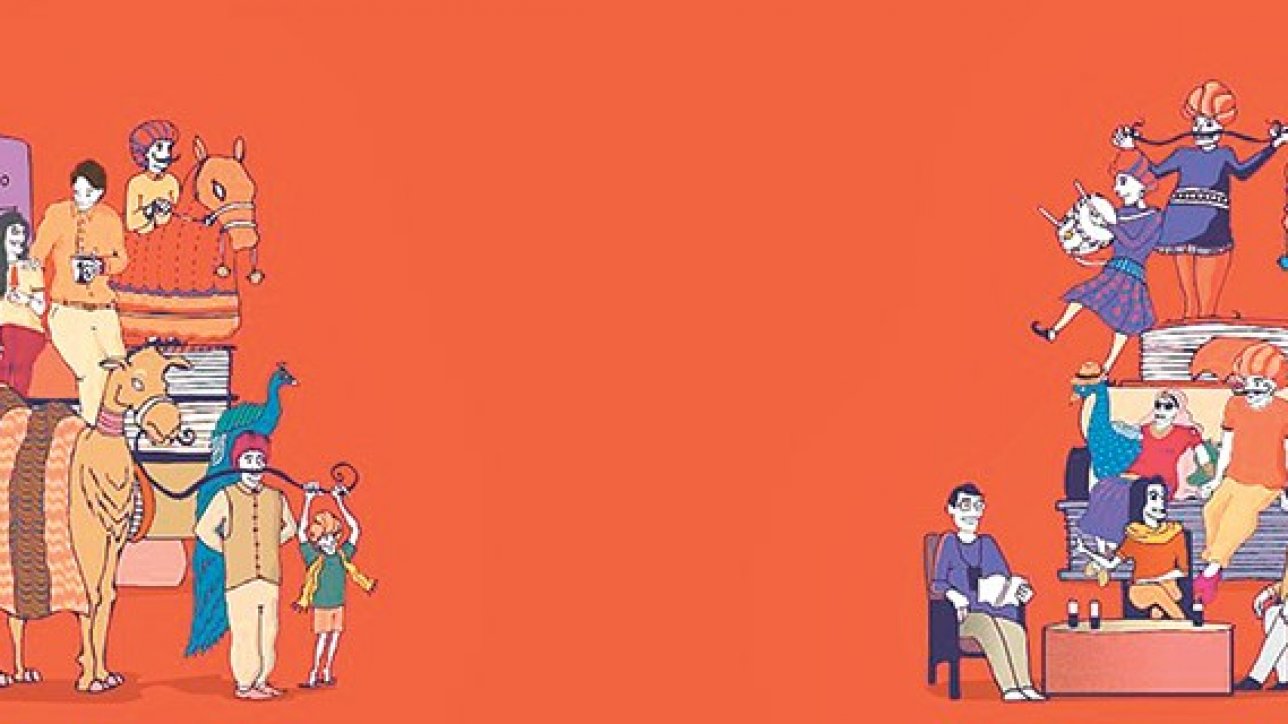The city of Jaipur was built in 1727, about 50 years before Prithvi Narayan Shah carved out the Nepali nation state. Jaipur has been one of the key tourist destinations in India and forms a golden triangle with Agra and Delhi.
With a population of 3 million people, it also receives 1.5 million out of the 8 million foreign tourists that visit India every year and is bursting at the seams. The Rajasthan government tourism website claims that 33 million domestic tourists visit the state each year. Well preserved forts, good accommodation and the local cuisine provided with royal service makes this city attractive. I visited this city for the first time 20 years ago, and since then, like many other Indian cities, the construction of structures with contemporary South Asian character has increased. This means that less importance is given to aesthetics, and there is now less open space and more built up areas. The difference between Jaipur and Delhi is that Jaipur is cleaner, less congested, and the air is still clean; there are many young trees and the roads look as though they have been built better and are managed well. But South Asian road rage, honking and the desire to break all rules make commuting a challenge.
Lessons on commuting
In India, apart from the cities with metro systems, it used to be a nightmare getting taxis. You had to take metered taxis, and the only alternatives were to take three wheelers or dish out a lot of cash to hire cars by the day. But now, ride hailing sites like Uber and Ola have changed everything. Now, there are no problems in getting rides late after dinner, and customers feel a sense of security because they no longer feel as though they are being fleeced.
This could be a big lesson for Nepal, as apart from urban centres such as Pokhara and Kathmandu, we do not have a good system of taxis. The absence of taxis has forced people in many cities to buy vehicles even if they do not use them regularly. If urban centres are to have better transportation systems, and if congestion is to be reduced, services such as Uber, Ola, and the newly established Nepali service, Tootle, could be the answer. I met many people in Jaipur who told me that they stopped buying cars once Ola and Uber started offering their services.
Jaipur Literary Festival
In 2006, Namita Gokhale and William Dalrymple decided to start a festival at the Diggi Palace in Jaipur with 30 writers attending. This festival has now become the Woodstock of literature and readings. This year, the organisers shared that there were close to 400,000 footfalls in the five days over which the festival was held, with over 100,000 unique visitors. With controversy over the release of the film Padmaavat in India, there were fears of disruption, but the festival went smoothly. With more than 600 volunteers and 550 police personnel, security was further strengthened through facial recognition software, and proper headcounts were ensured with the use of scanners. Proper evacuations plans were also in place in case of emergency. The Jaipur Literary Festival is now the largest literary festival in the world.
Himalayan arc at Jaipur
The best part of being at the Jaipur Literary Festival is that you not only get to hear speeches on an array of topics, you also get to interact with great minds. I was involved in two sessions: the launch of the Himalayan arc, and conversations on an anthology on the Himalayas. This anthology edited by Namita Gokhale has more than 30 contributions from Nepali authors, many of whom have been published globally. With the geo-political discourse shifting back to Asia, the Himalayan arc is gaining importance in discussions as it separates as well as connects many nations in the region. Like in the 50s and 60s, the strategic importance of the Himalayas is being rediscovered, along with stories about its art, culture and people. More writings, discussions and discourse will emerge on the multiple initiatives that are being undertaken.
People next door
Sitting in on a session about India’s neighbourhood is always a challenge, as old lenses never show new views. However, this time, the session moderated by former diplomat and author TCA Raghavan was the most refreshing session on the issues of neighbours that I have participated in over the past ten years. There was no discussion on how Nepal has sold out to India or how Nepal is a safe haven for Pakistani terrorists. Also, post demonetisation, the issues of Nepal being used for printing fake currency notes is gone. The discussions focused on people-to-people relationships. What is not really understood is that the borders should be the centre of discourse between neighbours, not capital cities. I shared the information that while Nepali remittances from India is around $2 billion, the remittances from Nepal to India stands at $3.5 billion. So we have to understand that both sides benefit from the open border.
Further, the relationship between the youth of the two countries seems non-existent, as the number of Nepalis travelling to India for their education is decreasing, and fewer young Indians are visiting neighbouring countries. If you do not visit, you do not have a sense of connection. It is extremely important to have cultural and visitor exchanges. Tourists should be have fun and enjoy lovely sites, not discuss politics.
Perhaps the Jaipur Literary Festival organisers should explore how they can create a South Asian festival in each of the countries.
http://kathmandupost.ekantipur.com/news/2018-01-30/jaipur-musings.html

